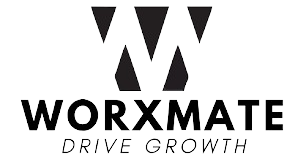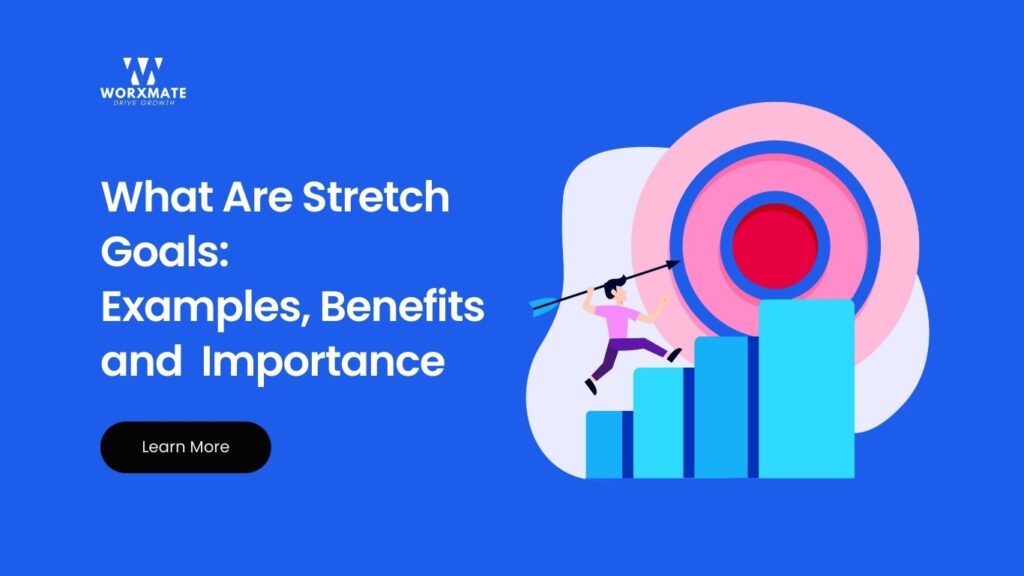Imagine an athlete training for a marathon. They don’t just aim to finish-they push themselves to beat personal records, testing their endurance beyond what they once thought possible. This same principle applies to setting goals in the workplace.
Setting goals is crucial as it supports you in achieving your goals and giving you a sense of direction. As a team manager, you are aware of the significance of employee goal-setting in maintaining team motivation and direction.
The majority of us focus too much on achievable, practical goals. There is undoubtedly a place and time for these types of targets. However, there are occasions when it’s preferable to urge your people to do more, try out creative approaches, and go beyond what we believe is realistic. That’s where stretch goals come in.
This blog will walk you through what are stretch goals, their importance and how you can pursue them! Read on.
What are Stretch Goals?
A stretch goal is an incredibly difficult objective that is purposefully designed to push workers over their comfort zones in order to improve performance and accomplish desired results.
The term stretch goals refers to the idea that they are so challenging to accomplish that you have to actually stretch as the word states- beyond your comfort zone and present skills.
The sole objective of stretch goals is to reap the best perks that follow their accomplishment. However, stretch goals frequently run the danger of failing because they are too ambitious. But some methods and resources could make it more likely to reach them.
To reach these stretch goals, you must be willing to take chances, be creative, and push yourself to the edge. Keep in mind that when you set high standards, even failures can lead to significant progress. Ambitious goals provide greater results than straightforward ones, according to a Gartner study.
Benefits of Stretch Goals
According to research by McKinsey, aggressive yet achievable goals can significantly enhance a company’s performance. However, setting unachievable targets may lead to adverse effects.
Promote Innovation-
You’ll frequently need to develop fresh tactics or concepts in order to accomplish something remarkable.
Gain Confidence-
You can gain resilience and self-belief by taking on challenges that are outside of your comfort zone.
Boost Focus-
Achieving large goals requires efficient time management and well-defined priorities, which helps you concentrate on the important things.
Encourage Growth-
Stretch objectives encourage you to pick up new abilities, information, and routines that you may not have otherwise sought.
How and when should one have Stretch Goals?
Stretch goals can be implemented at any moment. They should, of course, be utilized to encourage your company to take risks and push the limits of what it is possible to accomplish.
All OKRs have some degree of stretch, but a team must determine how much stretch is appropriate. You might have to stretch a bit or a lot, depending on your end goal and the state of your sector. Keep in mind that stretch goals shouldn’t be so high that they make the OKR unachievable.
For stretch goals, you must be aware of these things. Employees perform best when given the freedom to choose the best way to accomplish goals. It is not appropriate to set the course from the very top to down.
You must be specific. Stretch goals that are too vague or imprecise may cause a rift with the teams attempting to meet them. And these goals must be completely in line with the goals of your company.
How to set and achieve Stretch Goals
Stretch goals encourage individuals and groups to aspire higher than they may believe they are capable of, acting as a kind of manual for development and innovation. You need a good plan in order to create and pursue these ambitious goals. Here is a step-by-step guide on doing it-
Establish a Specific, Ambitious Goal
Establish your stretch goal explicitly first. It need to be difficult enough to test you but accurate enough to direct you. Determine your particular goals and formulate them into a concise statement.
Divide It Into Doable Assignments
At first, big ambitions can feel daunting. The secret is to divide things up into manageable, smaller jobs. This not only helps you plan precise measures to do, but it also makes the objective feel smaller.
Monitor Progress Regularly
Monitoring your progress on a regular basis is essential. Establish a mechanism to regularly assess your progress toward the goals you establish and make necessary adjustments to your objectives.
Acknowledge and Reduce Issues
There are potential risks involved in pursuing stretch goals. Burnout is a serious risk that arises when people exert themselves excessively without adequate support or recuperation. Recognize these hazards early on and devise strategies to mitigate them.
Honor achievements and take lessons from setbacks
Recognising even minor victories can boost morale and inspire groups to keep pushing. It’s equally critical to learn from mistakes. Every error can help you learn from it and go one step closer to your objective.
Stretch Goal Examples
Incorporating stretch goals into your business strategy can drive innovation and significant growth. Here are some stretch goal examples to illustrate how ambitious targets can be set across various domains-
Business and Sales-
Increase Market Share- Aim to boost your company’s market share by 20% within the next year, surpassing typical growth rates.
Expand Customer Base- Set a goal to acquire 100 new customers in the next month, challenging your sales team to exceed standard acquisition numbers.
Product Development and Technology-
Accelerate Product Launches– Develop and launch two major product features in the next quarter, doubling the usual output.
Enhance System Reliability- Strive for best system uptime over the next year, setting a higher standard for reliability.
Personal Development-
Advance in Career- Aim to secure a managerial role within your industry in the next 18 to 24 months, accelerating your professional growth.
Expand Professional Network- Set a target to gain at least 100 professional contacts within your industry vertical over the next year, enhancing your networking efforts.
By setting stretch goals, individuals and teams push their boundaries and achieve outstanding results. The key is to ensure that these goals, while ambitious, are also supported with a clear strategy, resources, and adaptability.
Case Study: Unilever’s Sustainable Living Plan
In 2010, Unilever set an ambitious stretch goal- to double its revenue while simultaneously reducing its environmental footprint by 2020. This goal was part of the company’s Sustainable Living Plan, a strategy aimed at integrating sustainability into its core business operations.
Stretch Goal in Action:
To achieve this, Unilever focused on three key areas:
- Reducing Environmental Impact: The company aimed to cut carbon emissions, water usage, and waste across its supply chain.
- Improving Health & Well-being: Unilever launched initiatives to provide hygiene and nutrition education worldwide.
- Enhancing Livelihoods: The company committed to improving working conditions and opportunities for smallholder farmers and suppliers.
Results & Key Takeaways:
- Unilever successfully decoupled growth from its environmental footprint, reducing CO₂ emissions per ton of production by 65% by 2020.
- The company’s sustainable brands, like Dove and Ben & Jerry’s, outperformed others in its portfolio, proving that sustainability can drive business success.
- However, while Unilever made significant progress, it fell short of fully halving its environmental impact, highlighting the challenge of setting ultra-ambitious stretch goals.
Lesson:
Unilever’s experience shows that bold stretch goals can drive meaningful innovation and industry leadership, but they must be backed by continuous effort, adaptability, and strong execution strategies.
Final Word
Stretch goals should be relatively achievable even though they are ambitious and meant to push boundaries. When set properly, they can encourage creativity and extraordinary effort, but when set too high, they can be discouraging.
Furthermore, reaching stretch goals frequently calls for more resources than anticipated. As a result, resources can run out fast if they are not properly planned and allocated. Allocating and managing resources is a delicate skill that is essential to accomplishing any objective.
With the help of Worxmate’s OKR Tracking Software, your team can break down their stretch objectives into manageable chunks and create realistic milestones. This facilitates steady advancement and humanizes seemingly insurmountable goals. Schedule a call with Worxmate today and give your ambitions the boost they need!



